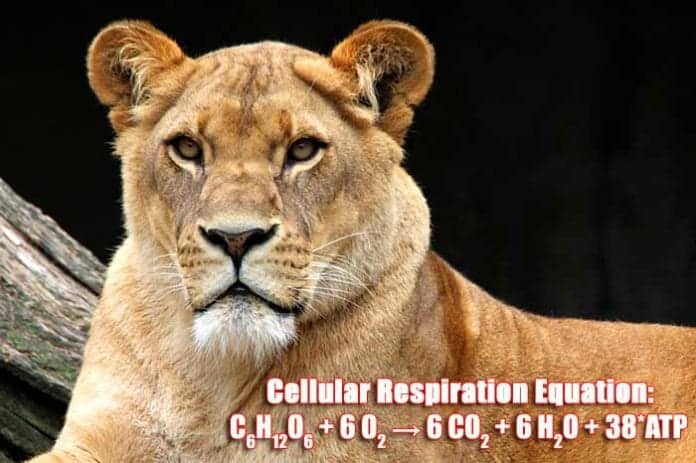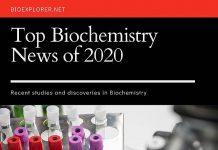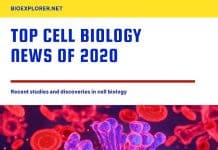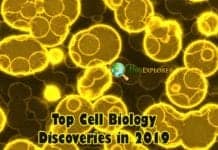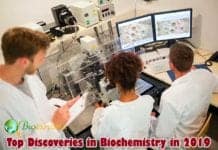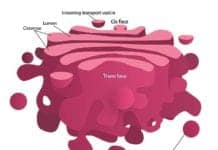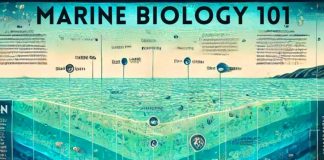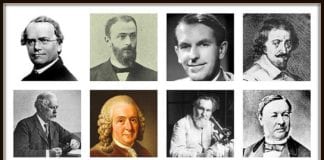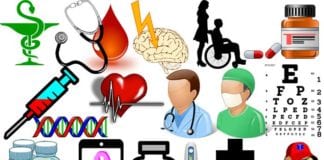Cellular Respiration Equation: C6H12O6 + 6 O2 → 6 CO2 + 6 H2O + 38*ATP Cellular Respiration Equation: Every machine needs specific parts and fuel to function. Likewise, “biological machines ” also require well-engineered parts and a good energy source to work. Perhaps the second most important molecule (DNA is the first) is adenosine triphosphate (also known as ATP )[1] . ATP serves as the main energy currency of the cell.
What is Cellular Respiration? Living organisms, including
plants ,
animals , and
microorganisms , generate their own energy in a process called
Cellular Respiration . Interestingly depending on the type of precursor for ATP production, organisms can be classified into two:
A) Organisms that utilize oxygen in the process are called “aerobic “. B) And those who do not are described as “anaerobic “.
Why is Cellular Respiration Important? As alluded to earlier, cellular respiration (regardless of whether it is aerobic or anaerobic) provides the required amount of ATP for living organisms. The energy in the form of ATP can then be utilized to drive various intra-cellular physiological processes like transporting molecules across cell membranes and the synthesis of bio-molecules.
Aerobic Respiration Source: Wikimedia Aerobic respiration is the type of cellular respiration that requires the presence of oxygen. Among all the types of cellular respiration, it is the most efficient. Plants and animals carry out this kind of respiration; plants obtain the precursor molecules from photosynthesis, while animals obtain them from the food they eat (i.e., plants/animals).
Photosynthesis Equation The equation for photosynthesis of plant cells is:
6CO2 + 6 H2 O + Sunlight → C6 H12 O6 + 6O2
Cellular Respiration Equation It is important to note that cellular respiration, in general, is not a single process but is, in fact, a set of metabolic reactions. Hence, their locations in the cell vary from pathway to pathway. Its overall chemical reaction of cellular respiration equation is simplified as:
C6 H12 O6 + 6 O2 → 6 CO2 + 6 H2 O + 38* ATP * Value is not constant for all aerobic organisms. It may range from 34 to 38 net ATP.
The above cellular respiration formula is formulated by combining the three following processes into a single one. Such processes are explained below.
Stages of Cellular Respiration 1. Glycolysis Diagrammatic illustration of the Cellular Respiration Pathway (Source: Slide Share ) glycolysis . Coming from the Greek word “glyk ” which means “sweet ” and “lysis ” which means “dissolution ,” glycolysis is the breakdown of one molecule of glucose (sugar) into two molecules of pyruvate [2] .
As shown in the above diagram, glycolysis occurs in the cytosol. Glycolysis is referred to as a “ten enzyme-catalyzed reaction,” but the overall simplified equation is[5] :
C6 H12 O6 + 2 NAD+ + 2 ADP + 2 P → 2 pyruvic acid, (CH3 (C=O)COOH + 2 ATP + 2 NADH + 2 H+ The above equation shows that glycolysis produces two ATP molecules, but four molecules are produced during the process. However, two molecules are consumed during the preparatory phase, hence, resulting in a net of just two ATP molecules. After glycolysis, there is a so-called “link reaction” that occurs. Such a reaction is the oxidative decarboxylation of pyruvate by the Pyruvate dehydrogenase complex (PDC). In simpler terms, the pyruvate from glycolysis is oxidized (converted) to acetyl coA, one molecule of NADH (nicotinamide adenine dinucleotide), and one molecule of carbon dioxide. 2. Krebs Cycle The Krebs Cycle (Source: Wikimedia )
The Krebs cycle, which occurs in the matrix of the mitochondrion, includes a series of oxidation-reduction reactions that result in the oxidation of the acetyl group to two carbon dioxide molecules[3] . During one cycle, there is a net of 3 NADH, 1 FADH2 (flavin adenine dinucleotide), and GTP (guanosine triphosphate, may be alternatively used to produce ATP). Hence, from one glucose molecule (that formed 2 pyruvates), a total of 6 NADH, 2 FADH2 , and 2 ATP molecules are produced. Note that the Krebs cycle aims to generate high-energy electrons from carbon sources. Also, notice that the process does not generate huge amounts of ATP or use oxygen as a precursor molecule. Instead, it uses the electrons from acetyl coA to form NADH and FADH2 . 3. Electron Transport Chain and Oxidative Phosphorylation Electron Transport Chain (Source: Wikimedia ) PDF ) is comprised of the electron transport chain and oxidative phosphorylation which both occur in the inner membrane of the mitochondrion.
This former, which is a part of the latter, establishes the chemiosmotic gradient (proton gradient) across the inner membrane of the mitochondrion by oxidizing the NADH from the Krebs cycle, whereas the latter manages the pathway in which the electrons from the donors are transferred to the acceptors in redox reactions. In ETC, electrons are transferred from one complex to the next, where the electrons reduce oxygen to produce water. Such reactions produce the majority of ATP during cellular respiration. Overall ETC produces water, NAD, and FAD (which are both recycled back to glycolysis and Krebs cycle) and up to 34 ATP per one molecule of glucose! The resulting product of aerobic cellular respiration from a single glucose molecule can be up to 38 ATP. However, some organisms can only produce 34 to 36 because they have a different precursor molecule.
What is the role of Oxygen in the process? Oxygen is an essential molecule in cellular respiration. But where exactly does it fit in the picture? Oxygen can be found at the end of the ETC (during aerobic respiration), where it accepts electrons while picking up protons to produce water molecules
[4] .
Because of this, oxygen is also called the “final electron acceptor.” Electrons will be dispersed when oxygen levels are depleted, and the electron transport chain will discontinue. Of course, no ATP will be produced, causing the cell to cease some physiological functions.
Fermentation Lactic Acid Fermentation (Source: Wikimedia ) Alternatively during depletion of oxygen, the cell may undergo a process called
fermentation and utilize an alternative pathway at the end of glycolysis. And instead of oxidative phosphorylation, it uses substrate-level phosphorylation that does not require oxygen in the process (this is not to be confused with anaerobic respiration).
In animal cells, this process is called lactic acid fermentation. It is almost the same as aerobic respiration except for producing lactic acid. It can be simplified in the equation:C6 H12 O6 → 2 CH3 CH(OH)COOH + 2 CO2 + 2 ATP Conversely, microorganisms like yeast produce ethanol and carbon dioxide. Such process is referred to as ethanol or alcohol fermentation.C6 H12 O6 → 2 C2 H5 OH + 2 CO2 + 2 ATP In both types of the fermentation process, only 2 ATP are produced from a glucose molecule.
Anaerobic Respiration Anaerobic Respiration (Source: Wikimedia ) This process occurs just like the typical cellular reaction (same glycolytic and Krebs cycle pathway). Still, it only differs because it is used by organisms like bacteria and archaea, where oxygen is not the final electron acceptor. Rather, these organisms use sulfates or nitrates instead.
It is important to note that while fermentation and anaerobic happen without oxygen, the former is only an alternative and extends glycolysis to produce energy. In contrast, the latter uses other molecules to complete the cycle, as the organism will die in the presence of oxygen. Unlike aerobic respiration, which occurs in the mitochondria, aerobic respiration occurs in the cytosol. The anaerobic respiration process generates only 2 ATP per glucose molecule.
Looking back at the overall process, it will be apparent that living things should produce ATP, which empowers every metabolic activity of organisms. Also, the whole pathway of the cellular respiration equation is so precise that it cannot proceed if a single molecule or enzyme is missing. Just imagine the metabolic confusion if they are not so.
Life is so complex.
Cite This Page
[1] – “ATP: The Perfect Energy Currency for the Cell. ” ATP: The Perfect Energy Currency for the Cell. Accessed December 05, 2016. Link .[2] – Berg, Jeremy M. “Glycolysis and Gluconeogenesis. ” Biochemistry. 5th Edition. 1970. Accessed December 05, 2016. Link .[3] – Berg, Jeremy M. “The Citric Acid Cycle. ” Biochemistry. 5th Edition. 1970. Accessed December 05, 2016. Link .[4] – “Oxidative phosphorylation – Khan Academy. ” Khan Academy. Accessed December 05, 2016. Link .[5] – “Glycolysis Reactions. ” Glycolysis Reactions. Accessed December 05, 2016. Link .
